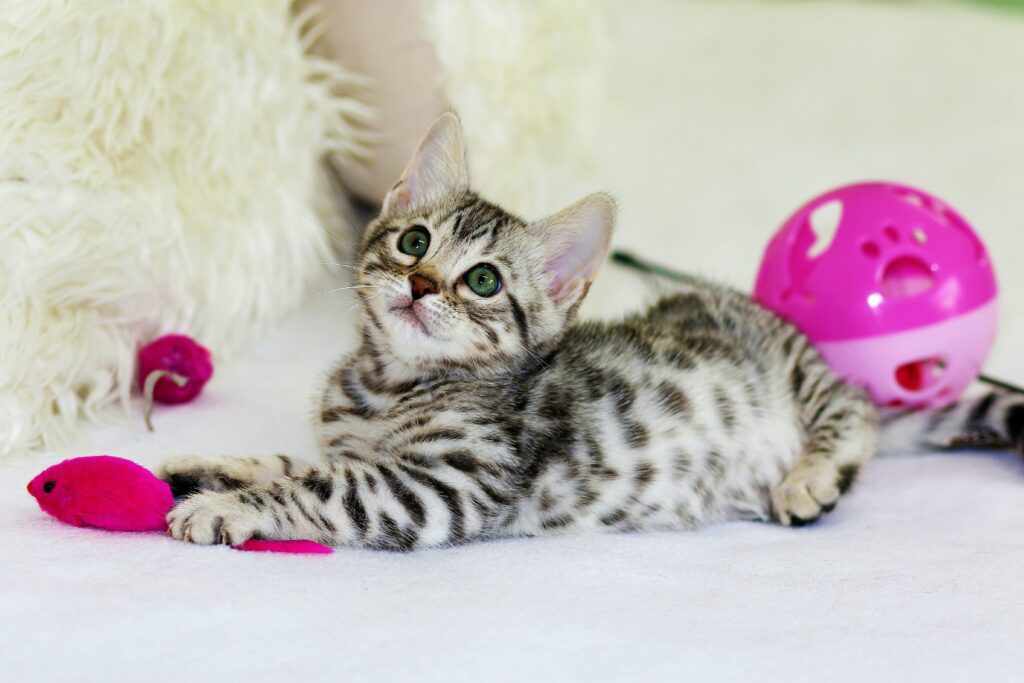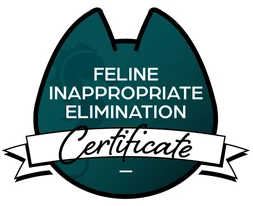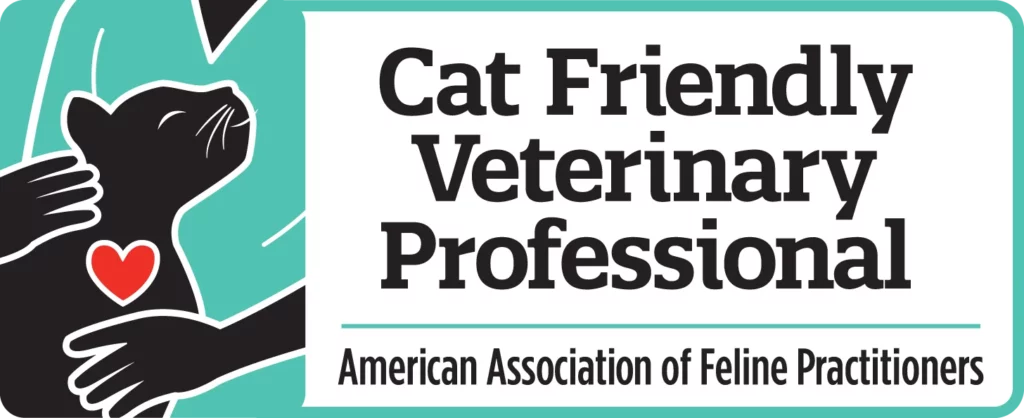“My cat doesn’t like to play.” Have you ever uttered this phrase? Well, I’m here to tell you that you’re likely wrong. More likely, your cat doesn’t like how you’re trying to play with them or playing with the toys you’re offering them. Playing with your cat can be counterintuitive and confusing so don’t feel at all bad about finding getting your cat engaged in a play session to be a challenge.
While part of the foundation of playing with a cat is getting the right toys, I have a separate post on picking the best cat toys. Today’s post will focus on the actual process of playing with your cat so I am going to assume you already have picked out an excellent cat toy like the Cat Dancer.
Seriously, if your cat hasn’t tried the Cat Dancer it is the greatest cat toy of all time.
Play Session Basics
Play for cats ultimately should imitate a hunt like what your cat would be doing in nature if they were going to murder a tasty snack and consume it. I know the idea of your cat killing something isn’t appealing, but cats are hunters so you need to take that into account when playing with them.

Cats tend to hunt small things like birds, bugs, and mice so they require multiple hunts through the day. These hunts are typically short so your play sessions should also be short. Somewhere between 5 to 15 minutes at a time spread across multiple sessions is best. Doing a power play session may seem like a good idea, especially for wilder cats, but it actually is more beneficial to do shorter sessions.
Play sessions should involve a toy that you move in order to get your cat’s attention much like something your cat actually would hunt in nature. Toys that are scattered across the floor are basically dead prey and aren’t going to scratch that itch the cat needs.
The Hunt Cycle
In order for your cat to satisfy their hunting instinct, they need to complete a full hunt cycle. The hunt cycle involves:
- Finding prey
- Stalking and plotting
- Chasing the prey
- Catching the prey
- “Dispatching” of the prey (This is the murder phase)
- Consuming their catch
In my experience working with clients, people tend to cut off a play session during the stalking and plotting phase. Why? The cat may just be watching a toy but not going after it. It can seem like the cat isn’t engaged, but really that’s an incredibly important part of the hunt. As long as your cat is watching the toy, they’re having fun.
Another part that people skip is the consuming part. Thankfully, that’s pretty easy to fix: give your cat a small meal or some tasty treats at the end of a play session. You can also consider a food puzzle afterward to give your cat a supplemental hunt.
How To Use Cat Toys
One of the biggest mistakes I see people do when trying to play with cats is dangling a toy right in front of their face. While this may seem like a way to get them engaged, it doesn’t imitate the hunt cycle as prey normally wouldn’t run right up to a cat and jump around in their face. Perhaps a bigger problem is that cats have terrible near vision and likely can’t see the toy well.
What should you do instead? Move the toy around either side to side or away from the cat. That is more similar to how a cute (but soon to be eaten) mouse would behave in nature. Moving the toy around objects or into a corner can also engage a cat as they may decide that the prey is in an easier position to strike.
Vary Your Play
During a play session, you’ll want to keep things interesting for your cat. Move the toy at different speeds. Start out fast and then slow down. Speed up a bit and slow down again. If you are using a feathered toy like the Fukumaru feathered wand toy or Da Bird (two excellent cat toys that are Poutine and Prozac approved!), you’ll want to have the toy in the air for part of the play session but eventually the “bird” should land.
As the play session goes on, think about what may happen to something a cat is hunting: the prey will eventually get tired. They may also get maimed or injured. Your cat is looking for signals that they prey will be easily caught and thus be a successful kill.
Wow, this blog post is really dark, isn’t it?
To tap into this, you can try moving the toy erratically. Make some lurching motions or move the toy in a jerky manner over time. This may signal to your cat that the “prey” is weakened so now is the time to strike.
Move Under Things
I already mentioned moving around objects like furniture or even pillows tossed on the floor, but one additional way to engage your cat may be to use a toy under something. If your cat tends to nip at your toes under the covers, that can be a signal they’d like this style of play.
You can try getting a towel to move the toy under or a product like Sheer Fun For Cats. Poutine in particular likes pouncing on things and loves our Sheer Fun For Cats!
Engage All Senses
Of course, playing with your cat isn’t just about sight or movement. Play should involve other senses as well too so try to fully engage your cat to make playing with your cat really stimulating for them.
You can use catnip, silver vine, or valerian root to get your cat’s nose working as part of a play session. Noises and sounds can also help engage some cats as long as they are not easily startled. Look for toys that make crinkles or have a bell. Alternatively, move the toy under some crinkle paper or even lightly hit it against the ground.
Another fun way to engage in play is to get a really big box. Take some crinkle paper or newspaper and toss it in the box. Use a wand toy in the box to make some noise. Your cat’s curiosity should be piqued and they’ll leap in to try to find the source of the noise. Alternatively, you can get a tunnel or play tent for your cat. Most will make some crinkly noise.
Bonus idea: After, toss a small handful of kibble or some treats in to make a homemade food puzzle.
Keep It Novel
Does your cat like a toy for a while and then seem uninterested after a few days or a week? What about engaging with it for a few minutes during a play session then seeming bored?
Good news: those are normal and expected cat behaviors. Playing with your cat should involve different toys either within a play session or over multiple play sessions. For cats that get bored in one play session, have multiple wand toys nearby so you can swap them out during the session or try different techniques outlined in this guide to get your cat engaged. I have a wall hanging wand toy holder that allows me to easily grab wand toys when playing with my cats so you can swap them out without issue.
For cats with a bit longer of an attention span, it’s still a good idea to change out toys. After about a week of using a toy, put it away for a while and use a new one. In a few weeks, you can bust out the same toy again and it will be like a whole new toy to your cat.
Play With Your Cat At The Right Time
If you’re getting ready to go to bed, you probably won’t feel like playing a board game (even if it is a fun cat themed one). Similarly, you’ll want to play with your cat at a time they want to play. This will vary from cat to cat and there is some wiggle room to when you play with them, but there are a few times of day that are ideal play times for cats.

Cats are crepuscular (which is also my favorite word) meaning they are most active around sunrise and sunset. You can probably guess the times that your cat may enjoy playing most based on that: sunrise and sunset. Playing with your cat first thing in the morning and before bed can tap into when they have the most energy naturally. Similarly, if your cat gets the zoomies around a particular time, play with them then.
Another time varies based on how you feed your cat. As mentioned earlier, a small meal is a great way to end a play session. Playing with your cat before they eat allows you to naturally wind down the play session. You can also play with them after, but playing with them before the meal is going to be more satisfying.
A Word Of Caution With Lasers And Electronic Toys
I wouldn’t have made a complete guide on how to play with your cat if I didn’t include something about laser pointers and electronic toys.
I’m not completely opposed to either. Electronic toys can be very useful, especially if you have a more energetic cat that requires more play than you can provide. They aren’t a substitute for actively playing with your cat, but can be a supplement if you need to distract a cat or have something going on once in a while that means you can’t get in a play session. They can be loud and scare some cats and not all of them are designed with what cats actually like to play with in mind.
A few electronic toys that seem to appeal to cats are the PetLibro mouse toy, the Hexbug remote control mouse, and the All For Paws Interactive Butterfly Toy.
You’ll notice that none of those toys involve using lasers. Lasers can be very frustrating to cats. Yes, that includes if they make your cat go wild. It may seem like they’re having fun, but the cat can never catch the laser. That doesn’t make for a fun or satisfying play session!
If you are going to use a laser, use it briefly at the start of a play session and rapidly transition your cat to an actual toy. It’s probably better to skip them entirely, but if you really want to use one just make sure you turn off the laser pointer when it is sitting on a toy. And skip the automatic toys that have lasers as they won’t be able to do that.
Playing With Your Cat Correctly
If you play with your cat in a way they enjoy, you’ll get all sorts of benefits. Your cat will be less likely to end up bored, they’ll be happier, and you’ll have less behavior concerns. This is especially true of play related behavior concerns like play aggression. Not all play is created equal, however, so you want to make sure that you are playing with your cat in a way that allows them to engage in a full hunt cycle.
If you’re looking to learn more about playing with your cat, I suggest ordering Mikel Delgado’s book Play With Your Cat. For personalized advice or for help with behavior problems related to playing, I’m available for consultations.










